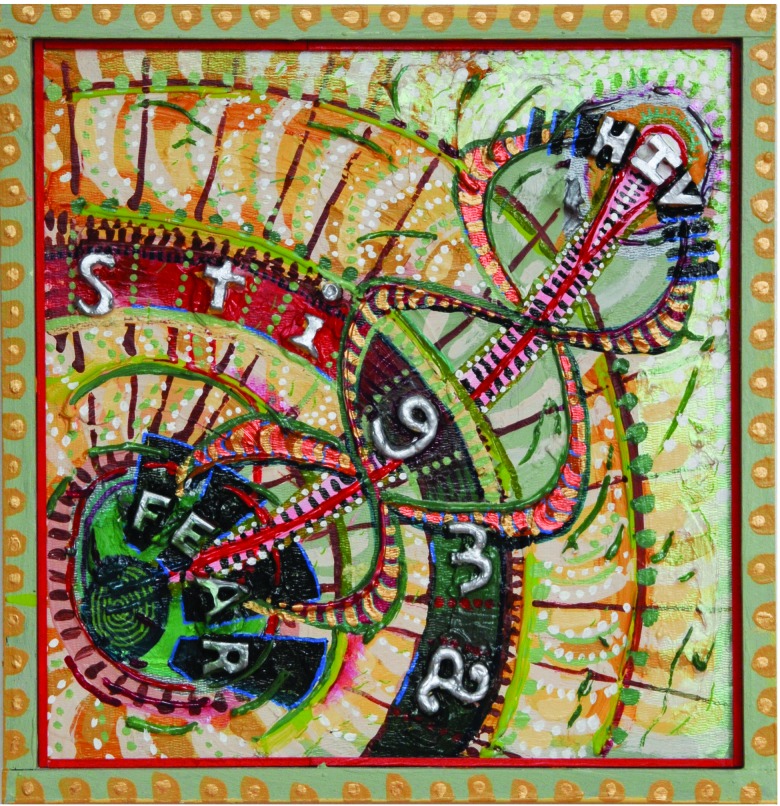THIS ACRYLIC PAINTING, The Stigma of HIV, by Lou Storey, an artist, designer, and clinical social worker, connects the fear of HIV/AIDS to the stigma it engenders. In other words, the root of stigma is fear. Superimposed on the concentric circles linking these concepts is the coiled structure of the double helix. The double helix is used to represent humanity and enlightened progression as well as to symbolize scientific understanding that may help us to advance beyond fear.
Storey created this image when he was working in a federally qualified health center that provided a large variety of health care services for all age groups. He worked in the Infectious Disease Unit, which dealt exclusively with HIV and AIDS. On his first day at the clinic, Storey was surprised by the absence of any public reference to HIV or AIDS. He discovered that this was intentional: the staff had concerns regarding the public’s strong negative opinion and fear of HIV/AIDS, and they wanted to protect their clients in the large public waiting room from potential discrimination. The clients confirmed that they feared having their diagnosis revealed to others and felt emotionally drained by their fear of public disapproval.
Reimagining HIV/AIDS. Courtesy of Lou Storey.
Storey’s primary goals were to counsel clients who tested HIV-positive about how to deal with the social stigma of AIDS, how to advocate for themselves with other members of the health professions, and how to recognize the elements of self-stigmatization they often experienced. Working with clients both individually and in groups (including a Magnetic Couples Group, in which one partner is negative and the other positive for HIV), Storey encouraged them to share their experiences, examine their attitudes toward themselves and others, and allow for creative solutions in dealing with the oppressive constraints of stigma. As an artist, he used forms of expressive therapy to encourage personal growth and the rewriting of life narratives. The painting is thus a teaching tool as well as a powerful statement of the way progress in understanding the many dimensions of HIV/AIDS can help break the social stigma of the disease.
As Storey explains his approach,
My artwork has always chronicled my life and gives visual manifestation to what is meaningful to me. My current paintings incorporate a multitude of ideas and concepts related to the mental health profession. My days in the studio are devoted to visually defining these various philosophies and therapies while working out difficult or elusive feelings and thoughts that are part of my workday. Bright colors, intricate patterns and directional motion continue to be my pictorial vocabulary as I now paint what I see or need to understand in my reward-ing life as a clinical therapist (e-mail communication, January 2013.



